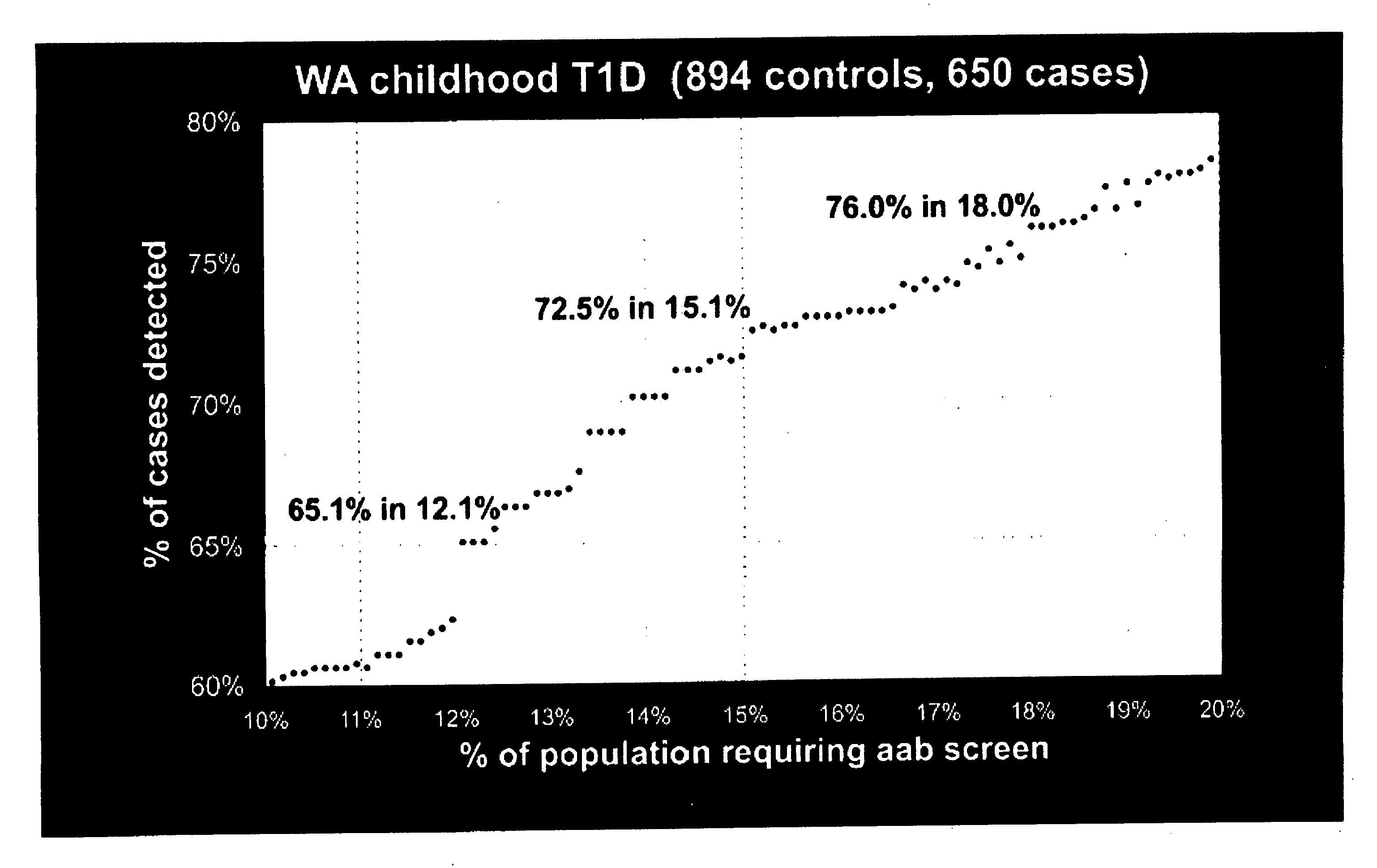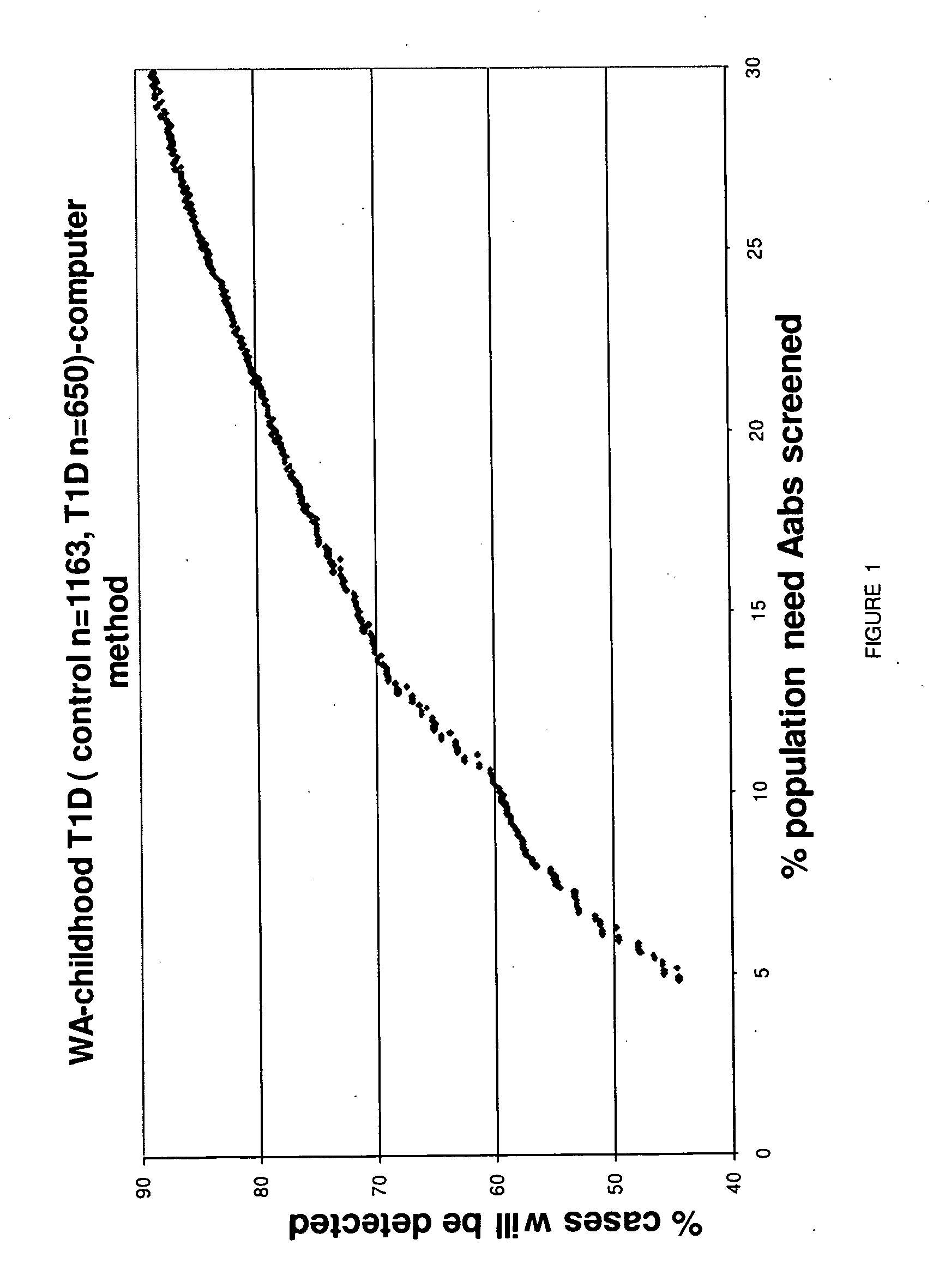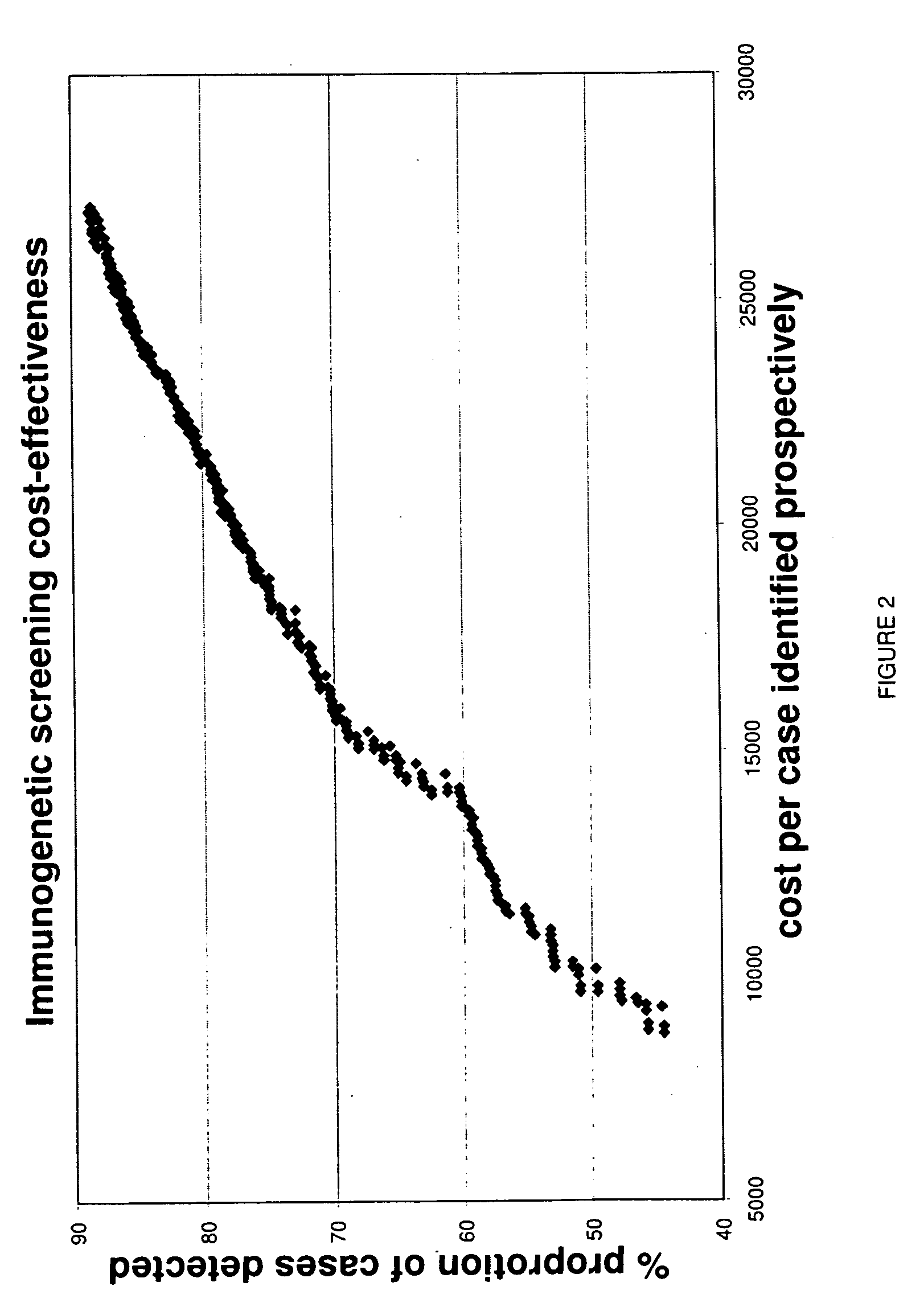Methods for screening for genetic predisposition to type i diabetes
a type i diabetes and genetic predisposition technology, applied in the field of genetic predisposition screening for type i diabetes, can solve the problems of high resolution, unfavorable routine screening of large numbers of individuals, and no consensus strategy for population-based t1d public health screening, so as to minimize the occurrence and associated costs of clinical t1d, maximize the performance of hla dr-dq screening, and reduce the cost of t1d. occurrence and cost
- Summary
- Abstract
- Description
- Claims
- Application Information
AI Technical Summary
Benefits of technology
Problems solved by technology
Method used
Image
Examples
example 1
[0045]A large case-control cohort from Washington State was HLA-DQ genotyped to determine: a) what are the best strategies for population-wide HLA Class II screening in a typical U.S. population, and b) whether the best such strategy is sufficiently predictive to be useful in screening for a subsequent autoantibody testing program for cost-effective, public health-based preclinical T1D prediction as a prelude to risk counseling and ultimately to delay or prevent the onset of disease.
[0046]The most useful haplotype algorithms for maximum performance of HLA DR-DQ in a T1D genetic screening role were identified as described below. Medium-resolution inferred HLA DQA1-DQB1 haplotypes from 907 T1D cases and 1163 healthy subjects from Washington State were combined into genotypes to test all risk assessment strategies based on relative risk groupings (susceptible, neutral, resistant) of the individual haplotypes. DQB1*0302 haplotypes were further stratified by DRB1*040X subtypes before ana...
example 2
[0060]The presence of one or more specific alleles in a biological sample is identified as follows. The method comprises PCR amplification followed by oligonucleotide probe hybridization using a commercially available time-resolved fluorescence (TRF) assay.
[0061]DNA amplification by polymerase chain reaction (PCR) was performed using either dried blood spot ⅛ inch punches or genomic DNA purified from whole frozen blood (QiaAmp, Qiagen) as template. DBS were amplified in 96-well microtiter plates by the PCR procedure. The reaction mixture was: DBS, 1XPCR buffer (16 mM (NH4)2SO4, 67 mM Tris-HCL (pH 8.8 at 25° C.), 0.01% Tween 20), 5.5% glycerol, 2.0 mM MgCl2, 0.2 mM each of dATP, dCTP, dTTP and dGTP, 0.35 pM DQA1 primers and 0.25 pM DQB1 primer, 3.5 unit DNA polymerase (Bioline, MA, USA) and DNAase free molecular grade water for a total volume of 100 ul. PCR primers for DQA1 were Biotin-5′-TAT GGT GTA AAC TTG TAC CAG T-3′(sense; SEQ ID NO: 1), 5′-GGT AGC AGC GGT AGA GTT G-3′(antisense...
PUM
| Property | Measurement | Unit |
|---|---|---|
| temperatures | aaaaa | aaaaa |
| temperatures | aaaaa | aaaaa |
| temperatures | aaaaa | aaaaa |
Abstract
Description
Claims
Application Information
 Login to View More
Login to View More - R&D
- Intellectual Property
- Life Sciences
- Materials
- Tech Scout
- Unparalleled Data Quality
- Higher Quality Content
- 60% Fewer Hallucinations
Browse by: Latest US Patents, China's latest patents, Technical Efficacy Thesaurus, Application Domain, Technology Topic, Popular Technical Reports.
© 2025 PatSnap. All rights reserved.Legal|Privacy policy|Modern Slavery Act Transparency Statement|Sitemap|About US| Contact US: help@patsnap.com



